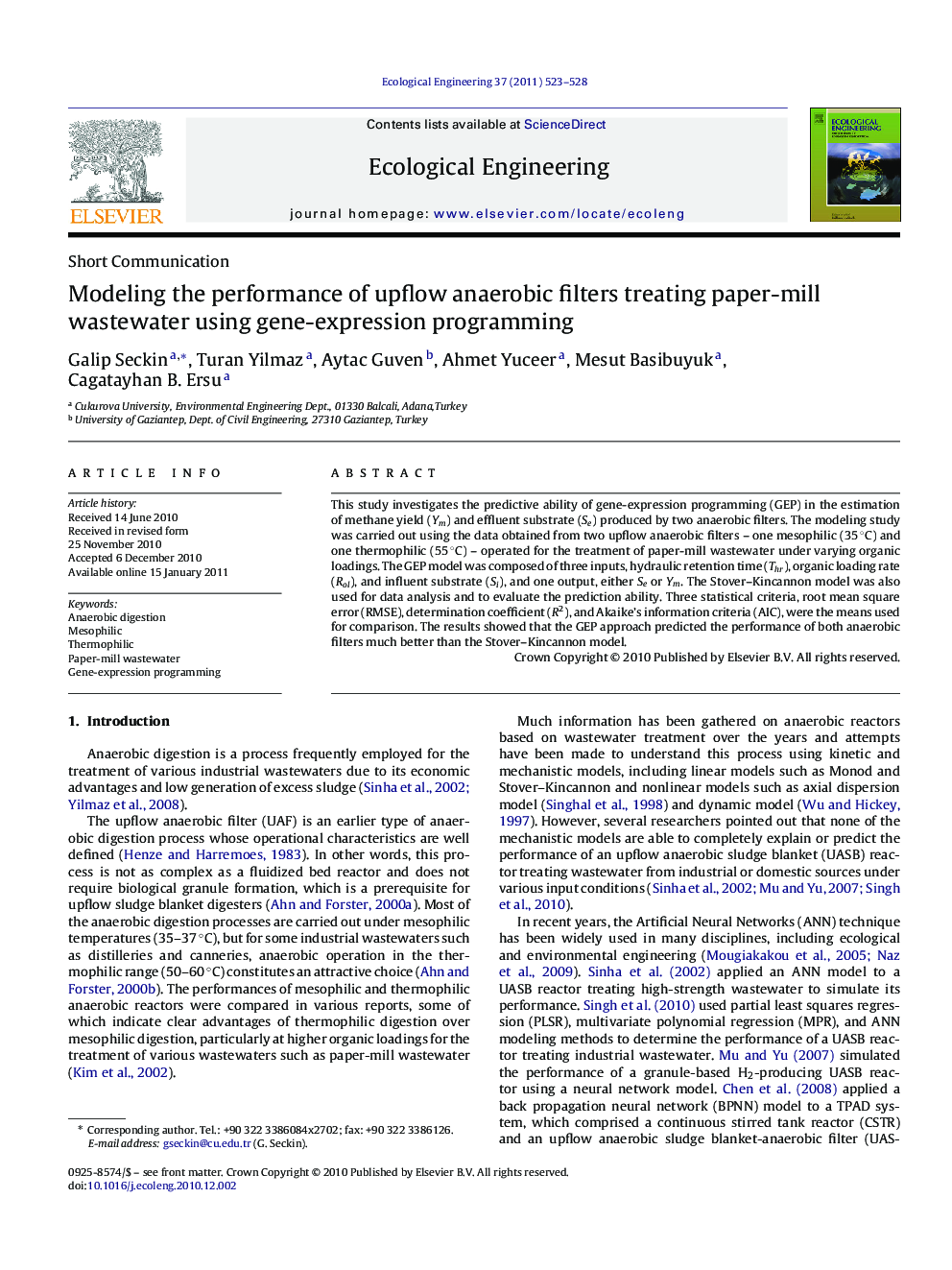| Article ID | Journal | Published Year | Pages | File Type |
|---|---|---|---|---|
| 4390233 | Ecological Engineering | 2011 | 6 Pages |
This study investigates the predictive ability of gene-expression programming (GEP) in the estimation of methane yield (Ym) and effluent substrate (Se) produced by two anaerobic filters. The modeling study was carried out using the data obtained from two upflow anaerobic filters – one mesophilic (35 °C) and one thermophilic (55 °C) – operated for the treatment of paper-mill wastewater under varying organic loadings. The GEP model was composed of three inputs, hydraulic retention time (Thr), organic loading rate (Rol), and influent substrate (Si), and one output, either Se or Ym. The Stover–Kincannon model was also used for data analysis and to evaluate the prediction ability. Three statistical criteria, root mean square error (RMSE), determination coefficient (R2), and Akaike's information criteria (AIC), were the means used for comparison. The results showed that the GEP approach predicted the performance of both anaerobic filters much better than the Stover–Kincannon model.
